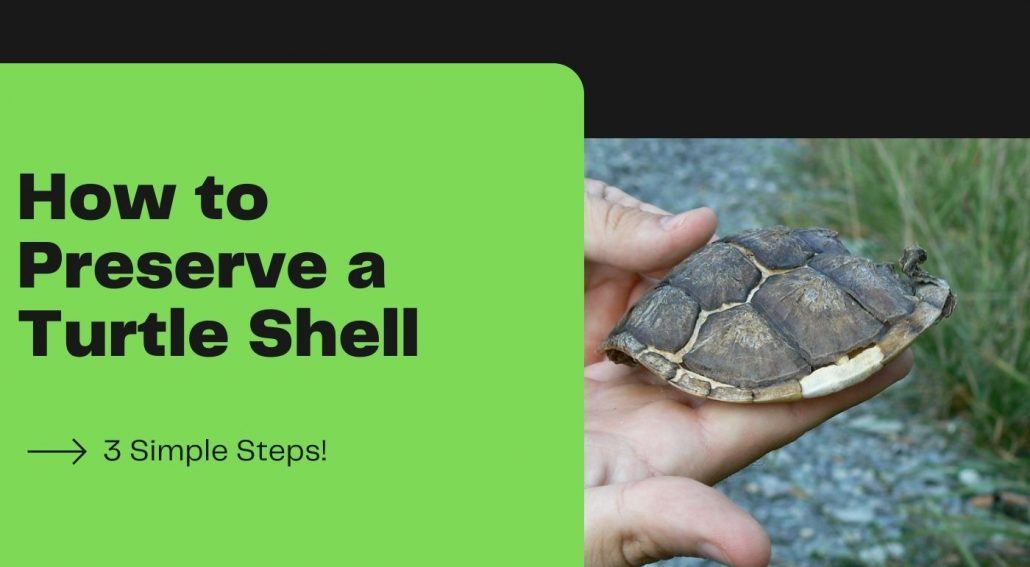Do you have a pet turtle? Ever wondered how to keep its shell healthy and strong? Well, you’re in luck! In this article, we’ll discuss various tips and tricks to ensure that your turtle’s shell stays in top shape. So, let’s dive right in!
First and foremost, it’s essential to provide your turtle with a proper diet. Turtles need a balanced and nutritious diet to maintain the health of their shells. Ensure that they have a variety of food options, including leafy greens, vegetables, fruits, and protein-rich foods like insects or small fish. It’s also crucial to provide them with calcium supplements to strengthen their shells. You can either sprinkle calcium powder over their food or offer them cuttlebone as a source of calcium.
Additionally, make sure to create an ideal habitat for your turtle. A clean and well-maintained environment is vital for the overall health of your pet. Ensure that the water in their tank is regularly cleaned and filtered. Turtles also require a basking area with a heat lamp to regulate their body temperature. This will help them metabolize calcium properly, contributing to the strength of their shells. Providing a designated area for your turtle to hide and rest is equally important. These small changes can go a long way in ensuring the well-being of your turtle and the health of its shell.
In conclusion, keeping your turtle’s shell healthy and strong is not a complicated task. By providing a good diet, creating a suitable habitat, and regularly monitoring their health, you can ensure that your turtle has a strong and robust shell. However, it’s important to remember that each turtle is unique, and consulting with a veterinarian who specializes in reptiles will provide you with specific advice tailored to your pet’s needs. So, read on to learn more about keeping your turtle happy and healthy!
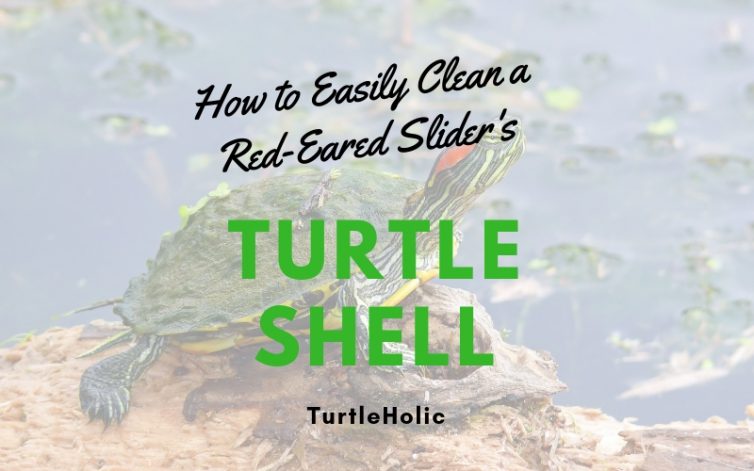
Understanding the Importance of a Healthy Shell
The role of a turtle’s shell in its overall health
The shell is a vital part of a turtle’s anatomy, serving both protective and structural functions. It not only shields the turtle’s delicate organs from external threats but also provides support for its body. Furthermore, a healthy shell contributes to a turtle’s ability to regulate its body temperature and buoyancy. It is crucial for owners to understand the significance of maintaining a healthy shell for their turtle to thrive.
How a healthy shell contributes to a turtle’s longevity
A well-maintained shell can significantly impact a turtle’s overall lifespan. A healthy shell indicates that the turtle is in good health, while abnormalities or damage can be signs of underlying issues. By providing the necessary care and attention to your turtle’s shell, you are not only ensuring its immediate well-being but also promoting long-term health and longevity.
Common problems associated with an unhealthy shell
Neglecting the shell’s health can lead to various problems for your turtle. Shell rot, caused by bacterial or fungal infections, can deteriorate the shell and compromise its integrity. Shell deformities, fractures, or pyramiding are other potential issues that can arise from inadequate care. Recognizing the warning signs of an unhealthy shell is essential in preventing these problems from escalating and affecting your turtle’s overall health.
Providing Proper Nutrition
The importance of a balanced diet for shell health
A balanced diet plays a crucial role in maintaining a healthy shell for your turtle. A varied diet that includes a combination of commercial turtle pellets, fresh fruits and vegetables, and occasional live or frozen prey is recommended. Each component of the diet contributes to meeting the turtle’s nutritional needs, which directly affects the development and strength of its shell.
Specific foods that promote shell strength
Certain foods are particularly beneficial for shell health due to their high calcium and Vitamin D content. Leafy greens, such as kale and collard greens, provide essential calcium for shell growth. Additionally, calcium-rich supplements like cuttlebone or powdered calcium can be added to the turtle’s diet, particularly for species that have higher calcium requirements.
Supplements to consider for optimal shell health
In some cases, providing additional supplements may be necessary to ensure optimal shell health. Vitamin D supplements, specifically those formulated for reptiles, can aid in the absorption of calcium. These supplements can compensate for insufficient UVB exposure, especially in indoor turtles. However, it is important to consult with a veterinarian knowledgeable in reptile care to determine the appropriate dosage for your turtle’s specific needs.
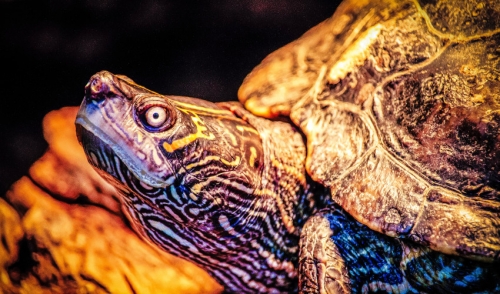
Maintaining Clean and Hygienic Conditions
The significance of clean water for shell health
Clean water is essential for maintaining a healthy shell. Turtles rely on water for hydration, as well as bathing and swimming to remove debris and excess skin from their shells. Unclean water can promote the growth of harmful bacteria or fungi, leading to shell infections. Regularly monitoring and maintaining clean water conditions is vital for preventing these issues.
Regular tank cleaning procedures
Regular tank cleaning is necessary to prevent the buildup of waste, bacteria, and other contaminants that can negatively impact your turtle’s shell health. This includes regularly removing feces and uneaten food, as well as performing partial water changes to maintain optimal water quality. Additionally, thoroughly cleaning the tank and its accessories periodically is crucial in ensuring a hygienic environment for your turtle.
Preventing shell infections and diseases
To reduce the risk of shell infections and diseases, it is important to maintain proper hygiene practices. Avoid overcrowding the tank, as this can increase the likelihood of bacterial or fungal growth. Regularly inspect your turtle’s shell for any signs of abnormality, such as discoloration, soft spots, or foul odors. If you notice any concerning symptoms, seek veterinary assistance promptly to prevent the infection from spreading and causing further damage.
Creating an Ideal Habitat
Choosing the right tank size for your turtle
Providing an appropriate tank size is essential for promoting optimal shell health. The tank should be spacious enough to allow your turtle to move freely and fully extend its limbs. A general rule of thumb is to provide at least 10 gallons of water per inch of turtle shell length. Offering ample space ensures that the turtle can engage in natural behaviors, such as swimming and basking, which are crucial for shell growth and overall well-being.
Suitable substrate and basking areas
Selecting suitable substrate for your turtle’s tank is important to avoid any potential injuries to the shell. Smooth river rocks or large pebbles are ideal choices, as they provide a comfortable surface for your turtle to rest and bask on. Avoid using small gravel or sharp objects that may cause abrasions or lead to shell damage.
Providing proper basking areas is also crucial for your turtle’s shell health. This includes a dry and sturdy platform where the turtle can completely dry off and receive direct exposure to heat and UVB light. Basking helps the shell absorb Vitamin D, which aids in calcium absorption for shell strength.
Ensuring proper temperature and lighting
Maintaining appropriate temperature and lighting conditions is vital for your turtle’s overall health and shell development. Turtles are ectothermic, meaning they rely on external sources of heat to regulate their body temperature. Ensure that the basking area’s temperature is adequately warm, usually between 85-95°F, while the water temperature should be maintained within the species-appropriate range.
Proper lighting is equally important, as turtles require exposure to UVB rays to synthesize Vitamin D3, which aids in calcium absorption. UVB lighting should be provided for at least 10-12 hours a day, simulating natural sunlight. Regularly check and replace UVB bulbs according to the manufacturer’s recommendations to ensure optimal output.

Implementing Regular Shell Inspections
How often should you inspect your turtle’s shell
Regular shell inspections are essential for monitoring your turtle’s shell health. Ideally, a visual inspection should be performed at least once a week, focusing on signs of discoloration, soft areas, lesions, or any other abnormalities. Additionally, palpating the shell gently can help detect any changes in texture or shape that may require further investigation.
Identifying signs of shell problems or abnormalities
Knowing how to identify common shell problems or abnormalities is crucial for early detection and treatment. Shell rot, for example, is characterized by discolored, soft, or even foul-smelling areas on the shell. Pyramiding, on the other hand, manifests as pyramid-shaped growth rings on the scutes. Other signs may include shell lesions, cracks, or deformities. Prompt action is necessary if any of these issues are noticed to prevent further complications.
Seeking veterinary assistance when necessary
While regular inspections and vigilant care can prevent many shell-related issues, there are instances when professional veterinary help is required. If you notice severe shell damage, persistent infections, or any abnormal changes that you are unsure about, it is crucial to consult with a veterinarian experienced in reptile care. They can provide a proper diagnosis, treatment plan, and guidance on how to improve your turtle’s shell health.
Promoting Healthy Shell Growth
Proper handling techniques to avoid shell damage
Proper handling techniques are vital to prevent any accidental injuries or damage to your turtle’s shell. Never pick up a turtle by its shell, as this can cause unnecessary stress and potential harm. Instead, always support the turtle’s body from below, allowing its legs and head to be free. This reduces the risk of shell fractures or trauma.
Encouraging natural basking behaviors for shell development
Turtles have natural basking behaviors that are important for their shell development. By providing a suitable basking area with the right temperature and lighting, you are encouraging these behaviors. Ensure that the basking area is easily accessible and appealing to your turtle, as regular and proper basking promotes healthy shell growth.
Avoiding excessive pressure on the shell
Excessive pressure on the shell can lead to cracks or shell deformities, compromising its integrity. Avoid placing heavy objects or decorations on the turtle’s shell, as well as avoiding high falls or impacts. Providing a safe and secure environment reduces the risk of external pressure on the shell and helps maintain its strength and structure.
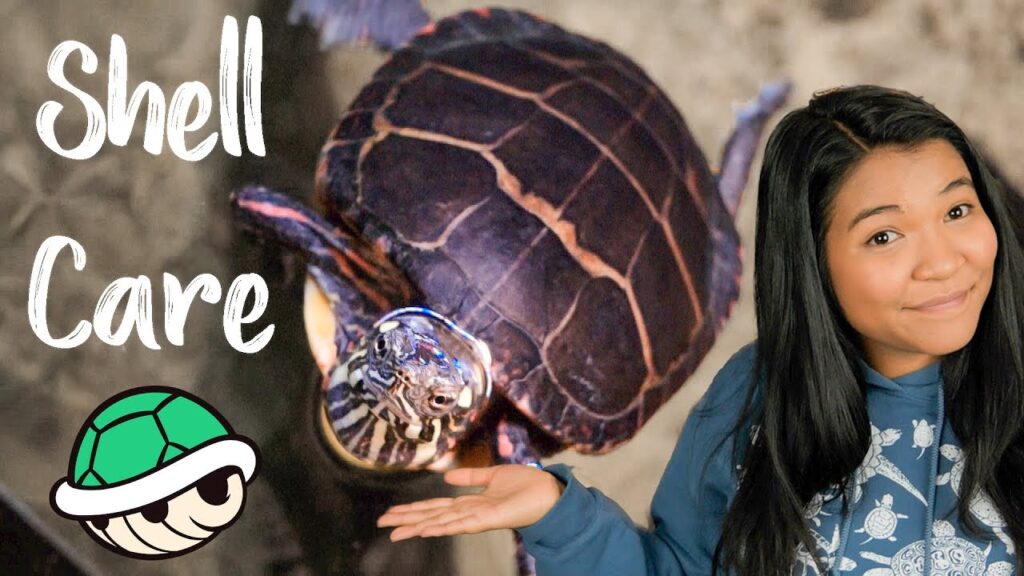
Providing Adequate Sunlight and UVB Exposure
The role of sunlight and UVB rays in shell health
Natural sunlight provides essential UVB radiation that is beneficial for a turtle’s shell health. Exposure to sunlight stimulates the synthesis of Vitamin D3, promoting calcium absorption and enhancing shell strength. However, caution must be exercised to prevent overheating or excessive exposure to harmful UV radiation.
Creating a suitable outdoor enclosure for extra exposure
Creating a suitable outdoor enclosure allows your turtle to experience the natural benefits of sunlight while protecting it from potential dangers. The enclosure should provide shade for the turtle to escape direct sunlight when necessary and should be secure to prevent escape or predation. Supervise your turtle during outdoor time to ensure it doesn’t overheat or come into contact with any harmful substances.
Choosing the right UVB lighting for indoor turtles
For indoor turtles, providing artificial UVB lighting is essential to compensate for the lack of natural sunlight. UVB bulbs specifically designed for reptile use should be used, ensuring that they emit the appropriate spectrum and intensity of UVB rays. Regularly check the manufacturer’s recommendations for bulb replacement to maintain optimal UVB output.
Avoiding Harmful Substances
Toxic substances that can harm a turtle’s shell
Turtles are highly sensitive to toxic substances, which can potentially harm their shells and overall health. Common household chemicals, such as cleaning products, pesticides, or even certain types of plants, should be kept away from the turtle’s environment. Additionally, it is crucial to avoid using any materials or decorations in the tank that may leach harmful chemicals into the water.
Safe cleaning products for the turtle’s habitat
When it comes to cleaning the turtle’s habitat, it is important to use safe, reptile-friendly cleaning products. Mild, fragrance-free soaps or reptile-specific cleaning solutions are recommended. These products effectively remove bacteria and contaminants without leaving harmful residues that can be absorbed by the turtle’s shell. Always rinse the tank and accessories thoroughly to ensure the removal of any cleaning product residue.
Avoiding exposure to harmful chemicals
Apart from cleaning products, other chemicals and substances in the household should also be kept away from the turtle’s vicinity. This includes aerosols, tobacco smoke, and strong odors from perfumes or air fresheners. These substances can have detrimental effects on a turtle’s shell health and may even lead to respiratory issues.
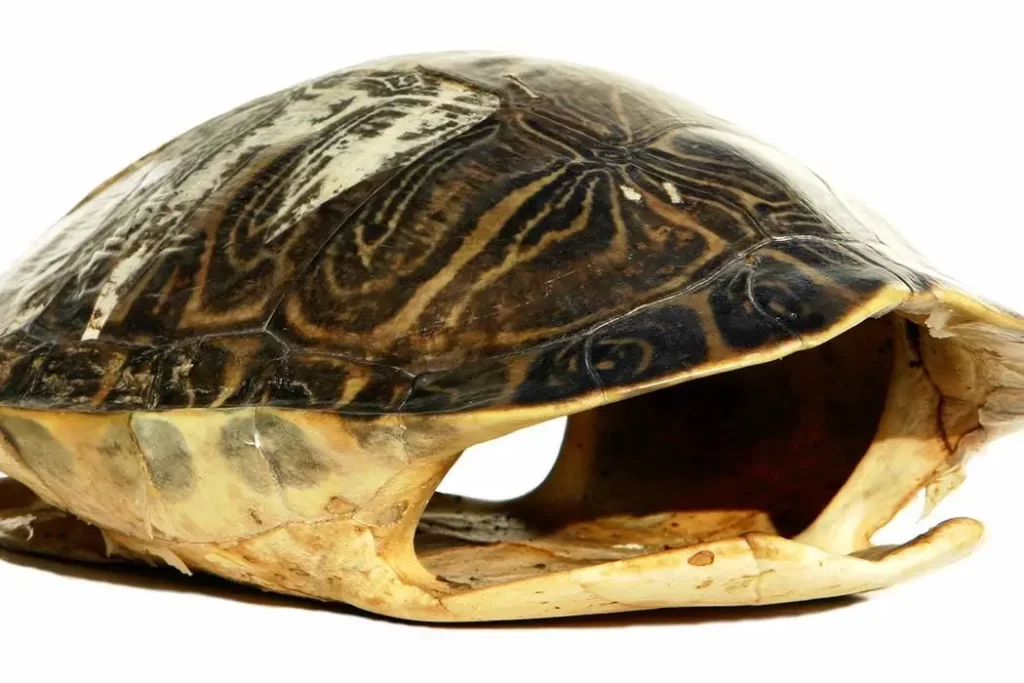
Understanding the Natural Shell Shedding Process
The importance of shell shedding for a turtle
Shell shedding, also known as molting, is a natural process for turtles to replace their scutes, the individual plates that make up their shell. This shedding process allows for the growth of a healthy, sturdy shell. Owners should understand this process and what to expect to ensure proper care during shedding periods.
Recognizing the signs of normal shedding
Normal shedding is characterized by the turtle’s scutes appearing dull or discolored, followed by their eventual peeling or flaking off. This process occurs gradually and should not cause any pain or discomfort to the turtle. It is important not to interfere with the shedding process, as it is a natural and necessary part of a turtle’s growth and shell maintenance.
Assisting in the shedding process if necessary
In some cases, turtles may experience difficulty shedding or have fragments of scutes remaining attached to their shell. This can lead to potential problems, such as infections or deformities. If you notice any difficulties during shedding, it is recommended to consult with a veterinarian experienced in reptile care. They can advise on the appropriate steps to assist in the shedding process without causing harm to the turtle or its shell.
Preventing and Treating Shell Infections
Common types of shell infections in turtles
Shell infections are a common issue that turtles may encounter. Bacterial or fungal infections can occur, leading to shell rot or other skin-related problems. These infections are often caused by unclean water, improper diet, or inadequate environmental conditions. Regular inspections, proper hygiene practices, and a well-balanced diet can help prevent these infections.
Proper hygiene practices to prevent infections
Maintaining proper hygiene practices is crucial in preventing shell infections. This includes consistently monitoring and maintaining clean water conditions, removing waste promptly, and regularly cleaning the tank and its accessories. Additionally, provide a healthy diet and ensure the turtle’s habitat meets all the necessary requirements for optimal shell health. These practices work together to create an environment that is less likely to harbor bacteria or fungi.
Effective treatment options for shell infections
If your turtle develops a shell infection, seeking proper treatment promptly is essential. Depending on the severity and type of infection, treatment may involve topical or oral medications prescribed by a veterinarian. Cleaning the affected areas and applying appropriate ointments or solutions may also be part of the treatment plan. It is crucial to follow the veterinarian’s instructions carefully to ensure successful treatment and prevent the infection from worsening.
Addressing Shell Trauma and Damage
Types of shell damage and their causes
Shell damage can occur due to various factors, including accidents, falls, improper handling, or even attacks from other animals. Cracks, fractures, or sections of missing shell are common types of damage that turtles can sustain. Prompt action is necessary to prevent these injuries from becoming more severe or impacting the turtle’s overall health.
Emergency measures to take when a shell is compromised
If your turtle experiences shell trauma or damage, it is crucial to act quickly to minimize the risk of infection and further injury. Clean the affected area gently with a reptile-safe antiseptic solution or mild saline solution. If the damage is severe, such as a significant fracture or open wound, seek immediate veterinary assistance. In some cases, the turtle may require stabilization or surgical intervention to repair the shell and prevent complications.
Long-term care and healing for damaged shells
The healing process for a damaged shell can be lengthy, and long-term care is required to ensure proper regeneration and recovery. Follow the recommendations provided by your veterinarian regarding cleaning, medicating, and protecting the damaged area. Regular check-ups and monitoring the healing progress are essential to address any potential issues promptly and ensure a successful recovery.
Monitoring and Managing Shell Growth
Ensuring appropriate shell growth in young turtles
For young turtles, ensuring appropriate shell growth is crucial to set the foundation for a healthy shell throughout their lifespan. Providing a properly sized tank, a varied and nutritious diet, and adequate UVB lighting are all essential factors in promoting proper shell development. Regularly monitor the growth and progress of your young turtle’s shell to address any abnormalities or concerns promptly.
Handling overgrown shells and shell deformities
Overgrown shells or shell deformities can occur due to improper care or inadequate nutrition. If you notice that your turtle’s shell appears disproportionate, irregular, or excessively large, it is important to consult with a veterinarian experienced in reptile care. They can provide guidance on managing overgrown shells or shell deformities and recommend an appropriate treatment plan to correct or mitigate these issues.
Maintaining proper shell size for adult turtles
As turtles continue to grow and reach adulthood, it is important to ensure that their shell size remains appropriate for their species. Inadequate shell size can restrict the turtle’s movement, cause shell deformities, or lead to health issues. Regularly monitor your adult turtle’s shell size and consider upgrading to a larger tank if necessary. By providing adequate space for your turtle, you are promoting its overall well-being and shell health.
Educating Yourself on Turtle Shell Health
Recognizing reliable sources of information
Keeping up-to-date with reliable sources of information is paramount in ensuring optimal care for your turtle’s shell health. Trusted online resources, books written by reputable reptile experts, and advice from experienced turtle owners can provide invaluable insights and guidance. Always cross-reference information and seek professional advice when in doubt.
Staying updated on latest turtle shell care research
Turtle care research is continuously evolving, and staying updated on the latest findings can greatly benefit your turtle’s well-being. Follow reputable scientific journals or organizations focused on reptile health and behavior. By staying informed about new discoveries and advancements, you can further enhance your knowledge and provide the best possible care for your turtle’s shell health.
Connecting with turtle enthusiasts and experts
Joining online forums or local reptile clubs allows you to connect with other turtle enthusiasts and experts in the field. This community can be an excellent source of support, advice, and further education on turtle shell health. Engaging in discussions, sharing experiences, and learning from others’ knowledge can help you better understand and address specific issues related to your turtle’s shell health.
Conclusion
In conclusion, maintaining a healthy and strong shell is essential for your turtle’s overall health and well-being. By understanding the importance of a turtle’s shell and implementing proper care, you can ensure its longevity and vitality. Providing a balanced diet, clean and hygienic conditions, an ideal habitat, regular shell inspections, and promoting healthy shell growth are all key factors in maintaining a healthy shell. Additionally, ensuring adequate sunlight and UVB exposure, avoiding harmful substances, recognizing the natural shell shedding process, and addressing shell infections or damage promptly are crucial for optimal shell health. By educating yourself on turtle shell health and staying informed on the latest research, you can provide the best care for your turtle’s shell and enjoy a long and fulfilling companionship with your shelled friend.
